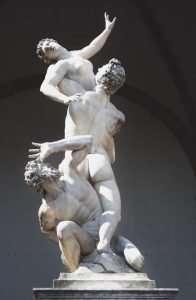Do you believe that a piece of art is more memorable if it has a great visual impact? Are you intrigued by the idea that art pieces can have a great impact on your mind?
Please leave your comments and thoughts below.
Students are highly interested in the art pieces featured in your classes. They enjoy looking at the work and having their own opinions, but they are also interested in the meaning behind it all. This is why I feel that students do not want to be shown every single piece of work, but rather a select few pieces.
These works of art can be easily remembered and discussed, giving students more insight and knowledge into what they are looking at. Students have told me that they like it when instructors only show a few select pieces because it gives them time to talk about each piece and allows them to share their ideas.
Most of these artists have been teaching for many years and know what styles interest their students and what doesn’t. So I believe that these artists know exactly what type of art is going to appeal to students, as well as help them learn more about the artist’s style or technique.”
For the past several weeks, I’ve been posting about the works of art that I have been viewing and discussing with my students at the Academy of Art University in San Francisco. So far, the series has featured works by artists like Chris Ofili and Pablo Picasso. The reason for this is to demonstrate to my students that these artists are not “above” them, so to speak.
The purpose of this blog is to give my readers an insight into where I am coming from as an instructor. I want to share with you some reasons why I choose pieces of art and how they relate to the coursework.
In my opinion, visual artwork promotes a certain atmosphere or mood amongst viewers by adding a unique twist on traditional forms of artistic expression. Although all artwork is different, it shares commonalities with other pieces in its genre. Therefore, it is important that we as viewers are able to notice these distinctions and react accordingly.
For example, when someone views a piece of modern art out in public, they may feel uncomfortable because it seems chaotic or even offensive toward them. However, if they understand that this piece is actually representative of the feelings of uncertainty that many people feel in today’s society, then they will be able to appreciate it more as an individual
Art is a subjective thing, and in this era of the internet, it is hard to know who is going to appreciate your art. The goal of art is to express one’s feelings about a particular subject. This can be an emotional response to something or someone you have experienced. It can also contain elements that no one can really understand unless you feel the same way.
Image and sound are universal languages, which means that everyone will be able to interpret the meaning of your work. But even though you know what you meant to say, it might not come through clearly enough for others to get it.
If you are interested in sharing your works of art with all types of people, then it is important that you have a blog where you can post them. You can then share them with others and discuss their meanings with your audience. By getting feedback on your pieces, you will be able to get a better idea of how they affect others when they view them.
A blog is a good way for artists to connect with other artists who share their interests and techniques. If you have any ideas on art, this is a great opportunity for you to see how other people react and respond to your ideas as well as share some of your own with them.*
The idea of art is to create something that will last and be remembered. It is not just a piece of paper or canvas that will be thrown away once it is created. Here are some ways to make something memorable.
It seems that every year about this time, The New York Times publishes a story about the life and work of an old artist. This year, for example, it was about the artist Robert Motherwell.
To me it’s strange that people would want to read a story like that. I’m sure the writer found it compelling, but I’ve always thought of art as being more immediate than that. Maybe it’s because I didn’t go to art school and never studied art history.
The most important thing I learned in college was how to learn on my own. That knowledge has served me much better than anything I learned in class.
I’ve always loved looking at other people’s work, and I’ve spent a lot of time doing it, but I usually don’t think about what someone else did so much as what other possibilities exist.


